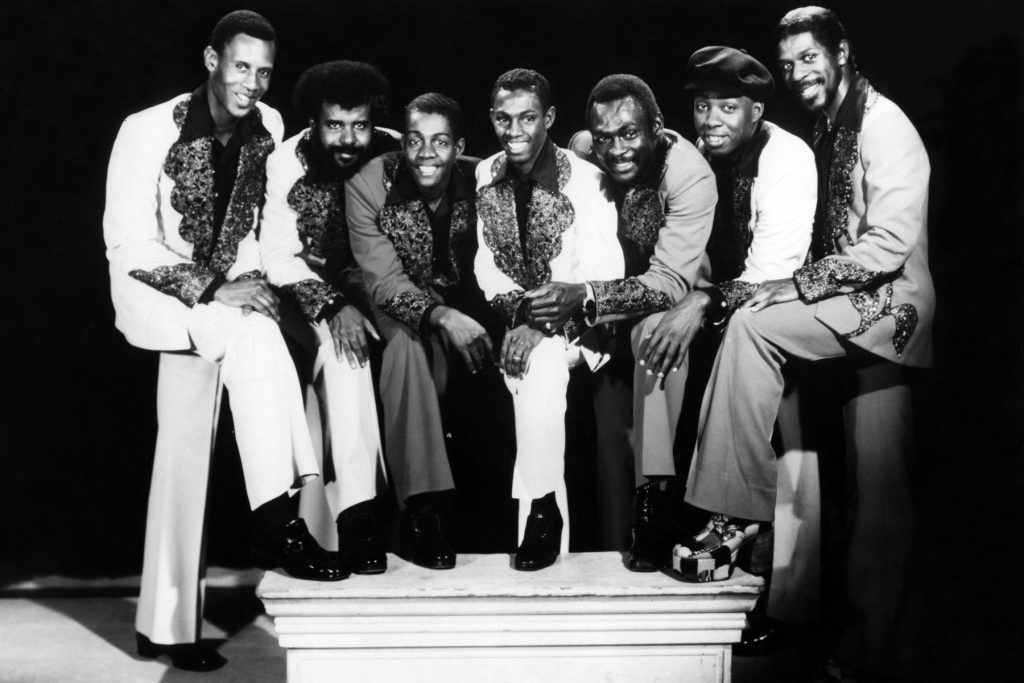
It Takes a Village to Raise an Artist: Jim Beam reconnects Muse to the Community That Raised Them
The last time Muse set foot onstage together was two and a half years ago in Lima, Peru, the final date of their Simulation Theory world tour. The show was an explosive, sci-fi circus rife with majestic dystopian themes, and laser-tag neon lighting. These bandstand theatrics have been a trademark of the trio’s live shows for almost two decades, but for their first gig since 2019, they’re taking a different approach. Thanks to Jim Beam, the band is returning to their hometown, for an intimate performance in front of the community that raised them.
“We first played the Cavern when we were about 16, 17 years old,” remembers frontman Matt Bellamy. “We had dreamed for years about performing there.” Located in Exeter, Devon, the Cavern is a staple in England’s South West music community. As well as being where Muse cut their teeth as live performers, the Queen Street venue has played host to marquee names like Coldplay and the 1975.
Muse — comprising Matt Bellamy (vocals/guitar), Chris Wolstenholme (bass), and Dom Howard (drums) — have been brought back to their old stomping grounds by Jim Beam for a secret homecoming show. It serves as the latest installment of the brand’s Welcome Sessions, a live event series that explores music’s role in fostering belonging and community by bringing artists like Wolf Alice and Jack Garratt back to the stages that first welcomed them. Now partnering with Muse, Jim Beam’s latest event underscores the brand’s belief that you truly feel connected when belonging to a community. It’s a sentiment that’s deeply rooted in Jim Beam’s two-century history of bringing people together, and it’s in this spirit that Muse has returned to their hometown of Teignmouth, a slow-paced seaside locale that sits on the mouth of the River Teign.
blogherads.adq.push(function () {
blogherads
.defineSlot( ‘medrec’, ‘gpt-dsk-tab-article-inbody1-uid0’ )
.setTargeting( ‘pos’, [“mid-article”,”mid”,”in-article1″,”mid-article1″] )
.setSubAdUnitPath(“music//article//inbody1”)
.addSize([[300,250],[620,350],[2,2],[3,3],[2,4],[4,2],[640,250]])
;
});
Back then, the trio performed for whomever would listen, strapping on their instruments at house parties, local sports halls, and the occasional family-friendly event. “We played a roller disco once,” remembers Wolstenholme “We were [usually] pitched up in the corner, and no one cared. I’m not sure anyone was really aware we were even there.”
Despite the lack of interest, Muse rose to stardom with the backing of their community. This tight-knit cluster of supporters included schoolmates, girlfriends, and newfound fans. “They were popular kids,” recalls Pippa Wragg Smith, co-owner of the Cavern. Wragg Smith and her business partner Dave Goodchild were responsible for booking Muse for their first show at the Cavern and her excitement for their return is visible. “I think Muse have always wanted to come back and play here” she says. “The whole narrative of Jim Beam, bringing people back to their roots and the community together…that’s exactly what’s happening when Muse play tonight.”

Muse fans at The Cavern for thier Jim Beam Welcome Sessions homecoming show
Sam Grant
The band performed at the Cavern more than 30 times in five years. “I remember vividly the last time we played there thinking that it would probably be the last time that we played it unless there was a good reason to come back. And I think this whole idea of music in the community and how important it is in the community, it’s a good thing to celebrate.” says Wolstenholme. “Music is always best when you share it with other people,” he says. “Had it not been for the Cavern, the band probably wouldn’t exist.”
Attending tonight’s show are some of the band’s earliest and most passionate fans, old school friends, a few family members, and, of course, Cavern owners Wragg Smith and Goodchild. The atmosphere is hyperkinetic, and as the lights dim, the crowd takes a collective deep breath. Muse then takes the stage to rapturous applause.
blogherads.adq.push(function () {
blogherads
.defineSlot( ‘medrec’, ‘gpt-dsk-tab-article-inbody2-uid1’ )
.setTargeting( ‘pos’, [“mid-article2″,”mid”,”in-article2″,”mid-article”] )
.setSubAdUnitPath(“music//article//inbody2”)
.addSize([[300,250],[300,251],[620,350],[2,4],[4,2],[3,3],[2,2]])
.setLazyLoadMultiplier(2)
;
});
In short order, the band tears through a setlist of stadium hits (“Supermassive Black Hole,” “Plug in Baby”) and fan favorites (“Stockholm Syndrome,” “Psycho”) before debuting their latest singles “Won’t Stand Down” and “Compliance.” The energy in the room is electric, and among the highly excitable fans there’s another familiar face in the back of the tightly packed crowd: Dennis Smith, the owner of Sawmills, the famous South West studio where Muse recorded their early demos and debut album, Showbiz.
Smith, who managed the band in their early years, took a chance on them. “Very quickly, I got the impression that they were mates which is very important,” he says. “So many people come through places like the Cavern in their earlier years. We had the opportunity to give them studio time, but I said, ‘You’ve got work to do and you’re still learning your craft onstage, so you should really carry on practicing at shows. Then, we’ll hit the ground running when it feels right.’”
Smith’s support is just another example of how the community that raised Muse was vital to building their foundation. Bellamy explains, “I got a phone call when I was 16, 17 from Dennis Smith, the owner of that studio,” he says. “He came to see us play and he said, ‘Look, if you work up enough material on what you think would make a good debut album then give me a call, and I’d love to listen to the demos and maybe I’ll give you some free studio time.’ So that was a major break for us, as it gave us the inspiration to really work on the material and create good demos.”
As the saying goes, it takes a village, and this is undoubtedly true in Muse’s case. The overwhelming support of their wider community evidently played an essential role in them stepping into the big leagues; it’s something Bellamy doesn’t take for granted. “Without the ongoing support of our community we wouldn’t be here today. After nearly four years away, it’s brilliant to partner with Jim Beam to reconnect with our fans.”




